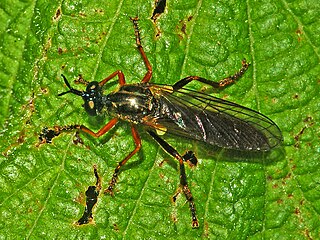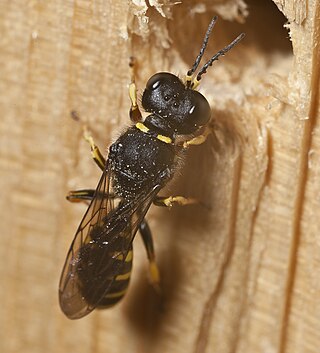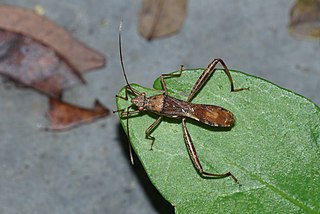
Johan Christian Fabricius was a Danish zoologist, specialising in "Insecta", which at that time included all arthropods: insects, arachnids, crustaceans and others. He was a student of Carl Linnaeus, and is considered one of the most important entomologists of the 18th century, having named nearly 10,000 species of animals, and established the basis for the modern insect classification.

Pentatomidae is a family of insects belonging to the order Hemiptera, generally called shield bugs or stink bugs. Pentatomidae is the largest family in the superfamily Pentatomoidea, and contains around 900 genera and over 4700 species. As hemipterans, the pentatomids have piercing sucking mouthparts, and most are phytophagous, including several species which are severe pests on agricultural crops. However, some species, particularly in the subfamily Asopinae, are predatory and may be considered beneficial.

Papilio is a genus in the swallowtail butterfly family, Papilionidae, as well as the only representative of the tribe Papilionini. The word papilio is Latin for butterfly.

In zoological nomenclature, a type species is the species name with which the name of a genus or subgenus is considered to be permanently taxonomically associated, i.e., the species that contains the biological type specimen. A similar concept is used for suprageneric groups and called a type genus.

Hesperia, the branded skippers, is a Holarctic genus in the skippers (Hesperiidae) butterfly family. Most species are endemic to North America, Hesperia comma is widespread throughout the region. H. florinda is endemic to temperate eastern Asia. H. nabokovi is endemic to Hispaniola.

Tenodera is a genus of mantis in the family Mantidae which contains several species of praying mantises. The species in this genus can be found primarily in Africa, Asia and Australia, but also North America.

Cantharis is a large genus of soldier beetles in the family Cantharidae with narrow and soft elytra.

Rhynchium is an Australian, Afrotropical, Indomalayan and Palearctic genus of potter wasps.

Erginus is a genus of sea snails, true limpets, marine gastropod mollusks in the family Erginidae.

Ypsolopha is a genus of moths of the family Ypsolophidae. It is the type genus of the family and comprises over 120 described species.

Argynnis is a genus of butterflies in the family Nymphalidae, one of several groups known as "fritillaries".

Marpesia is a butterfly genus in the family Nymphalidae. The species of this genus are found in the Neotropical and Nearctic realms.

Bebearia is a genus of brush-footed butterflies. The species are confined to the Afrotropical realm, mainly in the Guinean Forests of West Africa and the Congolian forests.

Dioctria is a genus of robber fly classified in the subfamily Dasypogoninae in the family Asilidae. Together with the genus Bohartia, Dicolonus, Echthodopa, Eudioctria and Metadioctria it forms the tribe Dioctriini.

Enochrus, a genus of water scavenger beetles, is the third-largest genus of hydrophilids with 222 species in six subgenera worldwide.

Ectemnius is a genus of wasps in the family Crabronidae. 188 species are known. The genus is found around the world but Australia has only two species.

Riptortus is a genus of broad-headed bugs in the family Alydidae. There are more than 20 described species in Riptortus.

Selatosomus is a genus of beetles belonging to the family Elateridae. The species of this genus are found in Europe, Japan, southern Africa and North America, and most of the species were formerly included in the genus Ctenicera.

Mictis is a genus of sap-sucking insects in the family Coreidae, with species recorded from India, China, Vietnam and Malesia through to Australia. It was described by William Elford Leach in 1814.



















